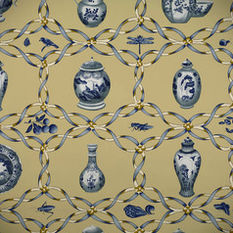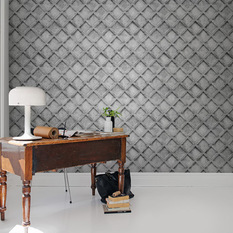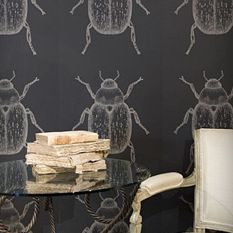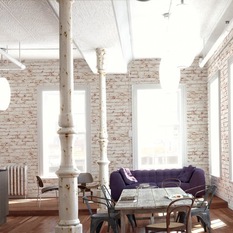968 Wallpaper
Wallpaper is a great way to add colour, texture and pattern to your interior without imposing on space. With countless wallpaper designs, materials and applications to choose from, there’s something for everyone. Want to create the illusion of depth in a teeny tiny room? Landscape wallpaper can make your walls feel never-ending. Do you want your traditional home to look more industrial? Timber, concrete or brick wallpaper can create a faux aesthetic that could easily be mistaken for the real deal! Even nurseries and kids rooms can benefit from wallpaper, with plenty of fantastical designs and murals to choose from. More
Why should I choose wallpaper over paint?
Generally speaking, vinyl wallpaper, whether plain-coloured or patterned, has been said to be a longer-lasting alternative to painted walls, which need to be cleaned frequently to maintain their appearance. Embossed or flock wallpaper also has a tactile effect that paint simply can't achieve, while other wallpapers allow you to hide surface imperfections, and can even be installed over rough walls. Wallpaper borders also make decorating plain walls easy, whereby using paint would require lots of preparation time and just as much patience.
What type of wallpaper material works for my space?
If you're currently trying to decide between grasscloth, fabric or paper and patterned, textured or plaster wallpapers, here’s what you should consider:
Embossed: Great for covering walls with imperfections, embossed paper is textured and can be painted. It’s easy to clean and hang.
Fabric: This textile-based wallpaper is tough to clean and hang, but it adds great texture and has a more trendy feel. A special clear paste must be used.
Flocks: This wallpaper consists of a paper or vinyl base featuring a pattern created from velvet-like raised designs. Their detailed aesthetic can be the focal point of the room, however not all types are washable or easy to handle, and it can be difficult to hang.
Foils: This metallic-looking wall covering will add brightness to a room and works best on clean walls with no damage or flaws. Though it’s harder to hang, it’s fairly easy to clean.
Grasscloth: Woven from long strands of grass, this wallpaper is extremely textural and has an organic quality. It's popular in more contemporary homes, though it’s hard to hang and tough to remove, and you must use clear adhesive to prevent bleeding.
Vinyl: This is the basis of most stock wallpaper. It’s easy to clean, hang and remove, and it works great for bathrooms.
How do I apply wallpaper myself?
If you're applying your new wall covering on your own, you want to make it as easy as possible, especially if it's your first time. Self-adhesive wallpaper is the easiest option, because you simply peel the backing off and stick the paper in place without needing paste, water or activator. Pre-pasted treatments are also fairly easy, since they are pre-coated with adhesive and just require water to activate it.
After you pick out your adhesive type, you'll want to be sure you have enough wall material. Standard wallpaper rolls measure approximately 10 meters in length and 20.5 inches in width. Wide width rolls are the same length but measure 27 inches in width. Be sure to measure your space carefully to calculate the number of rolls you’ll need to cover your desired space, then add one extra roll just in case.
As you start to apply it, be sure the first piece is straight — it will dictate how well the rest of the pieces are applied. There are many great tutorials on the application process, so be sure that you consult expert advise if you're unfamiliar with the technique.
Is it easy to remove wallpaper?
If you’re renting a place or like to change things up often, this is an important consideration and can affect the type of wallpaper you choose. Most pre-pasted and self-adhesive wallpapers are strippable or peelable with water or specified chemicals. Non-pasted wallpaper is usually the hardest to remove, so be sure you love it before you redecorate.



































